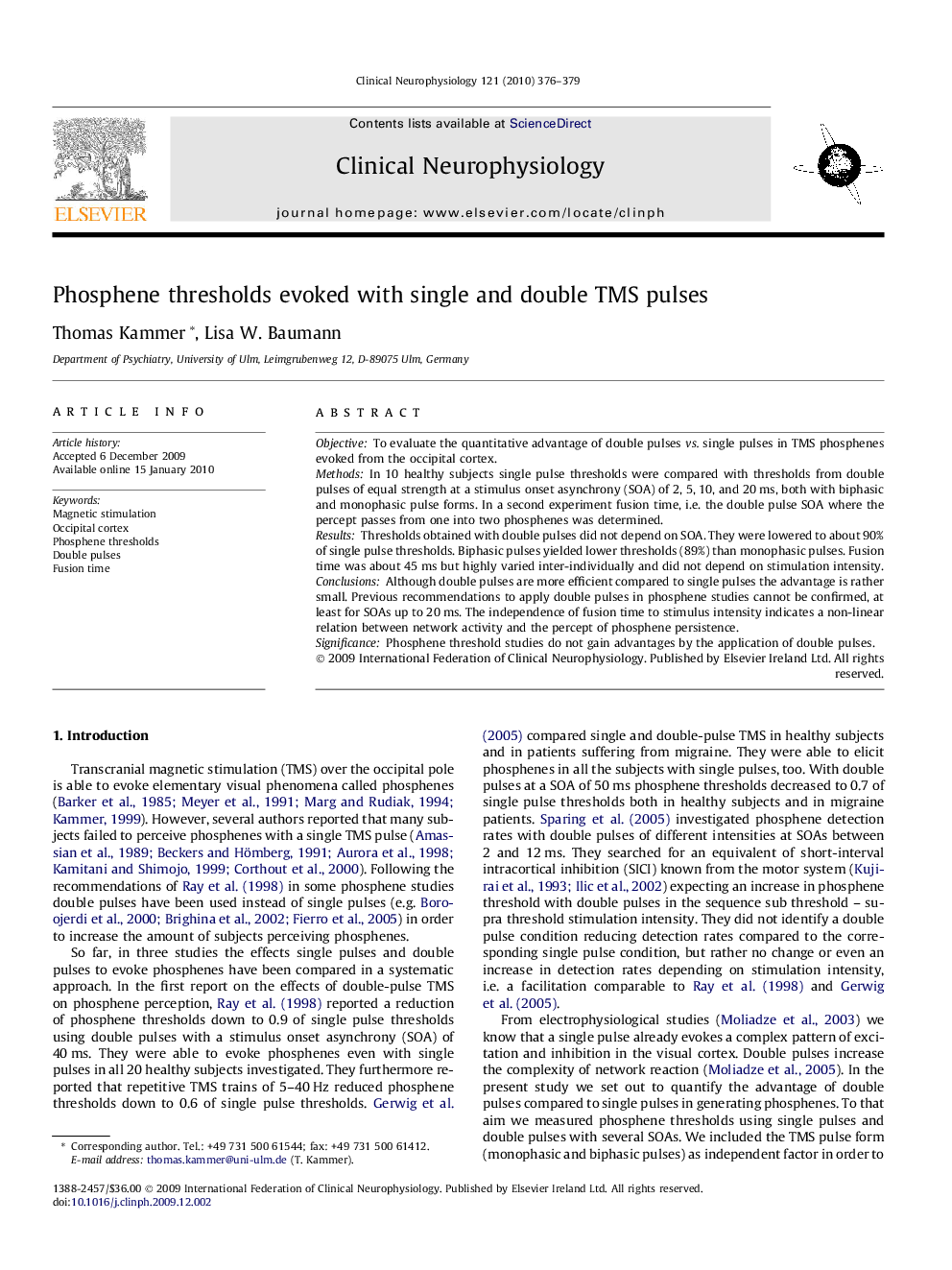| Article ID | Journal | Published Year | Pages | File Type |
|---|---|---|---|---|
| 3045153 | Clinical Neurophysiology | 2010 | 4 Pages |
ObjectiveTo evaluate the quantitative advantage of double pulses vs. single pulses in TMS phosphenes evoked from the occipital cortex.MethodsIn 10 healthy subjects single pulse thresholds were compared with thresholds from double pulses of equal strength at a stimulus onset asynchrony (SOA) of 2, 5, 10, and 20 ms, both with biphasic and monophasic pulse forms. In a second experiment fusion time, i.e. the double pulse SOA where the percept passes from one into two phosphenes was determined.ResultsThresholds obtained with double pulses did not depend on SOA. They were lowered to about 90% of single pulse thresholds. Biphasic pulses yielded lower thresholds (89%) than monophasic pulses. Fusion time was about 45 ms but highly varied inter-individually and did not depend on stimulation intensity.ConclusionsAlthough double pulses are more efficient compared to single pulses the advantage is rather small. Previous recommendations to apply double pulses in phosphene studies cannot be confirmed, at least for SOAs up to 20 ms. The independence of fusion time to stimulus intensity indicates a non-linear relation between network activity and the percept of phosphene persistence.SignificancePhosphene threshold studies do not gain advantages by the application of double pulses.
